Sunday, June 14, 2020
GS Score June 2020 2nd Week Current Affairs PDF
VisionIAS
07:17
GS Score June 2020 2nd Week Current Affairs PDF


JOIN UPSC MATERIALS TELEGRAM--CLICK HERE
Click Here to download GS Score June 2020 2nd Week Current Affairs PDF
Click Here to Like our Facebook page for latest updates and free ebooks
Saturday, June 13, 2020
Daily Current Affairs, 13th June 2020
VisionIAS
20:38

1) International Albinism Awareness Day: 13 June

•The theme of International Albinism Awareness Day 2020: ‘Made To Shine’.
2) Narendra Singh Tomar launched Sahakar Mitra Scheme
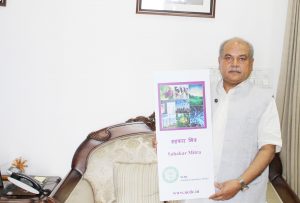
•NCDC has been proactive in delivering innovative solutions to the cooperative sector. The scheme will provide the young professionals with an opportunity for practical exposure and learning from the working of NCDC and cooperatives as a paid intern. Sahakar Mitra would also provide an opportunity for professionals from academic institutions to develop leadership and entrepreneurial roles through cooperatives as Farmers Producers Organizations (FPO).
3) UP govt starts “Bal Shramik Vidya Yojana” to educate child labourers
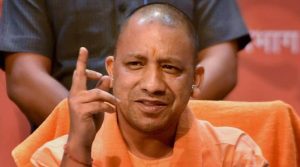
Benefits of the scheme:
•The government will give monthly financial assistance of Rs 1,000 and Rs 1,200 to selected boys and girls, respectively.
•If these children pass classes 8, 9 and 10, they will be given an additional amount of Rs 6,000 for clearing each standard.
•A total of 2,000 children from 57 districts of the state will benefit from the first phase of the ”Bal Shram Vidya Yojana”.
•The families of these children will also get the benefits of all the schemes of the central and state government.
4) Hyderabad police launches ‘STREE’ programme for women

5) MP govt gives ‘corona warriors’ status to Divyang Anganwadi workers
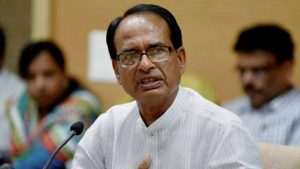
•They are distributing nutritious food from house to house of the beneficiaries. They are also advising people to avoid corona infection. Anganwadi workers advise that stay at home and follow the mantra of social distancing in remote areas.
6) Odisha becomes 1st state to get ISO for tribal hostels
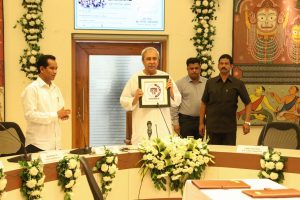
•In the first phase, hostels of Keonjhar and Sambalpur districts were taken up for assessment. Out of 156 hostels of Keonjhar, 60 were selected for intensive interventions. In March, the audit team for certification visited 32 hostels of Keonjhar and 12 of Sambalpur for final assessment. All the 44 hostels cleared the assessment parameters and were awarded ISO certification.
7) NHAI becomes 1st construction sector to go ‘fully digital’
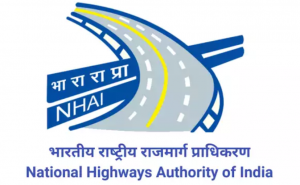
•The whole venture the executives work process of NHAI is changed from manual to the online entry based, wherein the total task execution activities including ‘work process with courses of events’ and ‘ready system’ have been designed. All venture documentation, legally binding choices, and endorsements are currently being done through the entryway as it were. The total undertaking archives and correspondences will be put away in an advanced arrangement in the cloud-based ‘Information Lake’ connected with GIS labelling and Unique Project ID, so the task information can be effectively recovered as and when required from any area.
8) Indian-American scientist Rattan Lal wins World Food Prize 2020

•Lal serves as Distinguished University Professor of Soil Science and founding Director of the Carbon Management and Sequestration Center at The Ohio State University (OSU).
9) FIFA’s latest ranking: India retains 108th slot

The HINDU Notes – 13th June 2020
VisionIAS
12:44

📰 CM unveils Mumbai’s new flood warning system, calls it a boon
System will help estimate level of inundation 3 days in advance
•Chief Minister Uddhav Thackeray on Friday inaugurated IFLOWS-Mumbai, a state-of-the-art flood warning system developed for the city. “The flood management system is a boon for the city and it will be helpful in saving Mumbai,” Mr. Thackeray said via videoconferencing after the launch.
•Dr. Harsh Vardhan, Union Minister for Health and Family Welfare, Science and Technology, and Earth Sciences, who was present at the launch, said the system will help the people of Mumbai in a “big way” as it can predict floods. The Ministry of Earth Sciences (MoES) has developed the system with in-house expertise and coordination with the Brihanmumbai Municipal Corporation (BMC).
•The Union minister said, “IFLOWS-Mumbai will enhance the resilience of the city by providing early warning for flooding, especially during high rainfall events and cyclones. Using this, it will be possible to have an estimate of the flood inundation three days in advance, along with immediate weather updates.”
•The Union Minister said the system was “one of the most advanced” ones and will help the city, which has been experiencing floods with increasing periodicity. “The hi-tech system will predict floods before they occur, therefore enabling Mumbaikars to take due precautions in advance. Mumbai floods, especially the ones in 2005 and 2017, are etched in everyone’s memory. This highly-advanced flood warning system will help the people of Mumbai in a big way. A similar system was already developed by the MoES and is in operation in Chennai,” he said.
•“In the 2004 tsunami, we lost lakhs of lives, in the absence of an early warning system. But now, India has developed an early tsunami warning system for the whole world and UNESCO has asked India to help other countries in early tsunami warning,” the minister said.
•Mr. Thackeray said the State government was able to shift people to safer locations when Cyclone Nisarga made landfall near Alibaug in Raigad district last week as Maharashtra had received warnings about the cyclonic storm two to three days in advance. He said, “Hence, there was hardly any loss of human life.”
•Mr. Thackeray said some areas in Mumbai are below the sea level and they are flooded during the high tide. “Therefore since 2005, several pumping stations have been built in the city, which stops ingress of water and also pumps it out of the city,” he said. On July 26, 2005, Mumbai witnessed one of its worst floods, receiving 944 mm of rainfall in a day.
‘Need Doppler radars’
•He also stressed the need to for four Doppler radars in the city. He said the BMC was the first civic body in the country to build its own molecular lab after a leptospirosis outbreak in the city. In a lighter vein, Mr. Thackeray told Mr. Harsh Vardhan, “Like this system, give us early warning about approaching political storms.”
📰 RBI panel to review private bank norms
Employment News 13 June to 19 June 2020 Download pdf
VisionIAS
09:49
Download Employment News pdf of this week 13 June to 19 June 2020 . Check latest job recruitment

Employment News pdf This Week - 13 June to 19 June 2020.
Hey Aspirants, its the latest for free of Employment Weekly Magazine. You can check latest job recruitment at various office/board. You can check upcoming vacancies and for this week/month. To download this employment magazine click on the link given below.
Click Here to download Employment News 13 June to 19 June 2020 – Download pdf
Click Here to Like our Facebook page for latest updates and free ebooks
THE HINDU NEWSPAPER IMPORTANT ARTICLES 13.06.2020
HOW TO STUDY ECONOMICS FOR IAS MAINS
VisionIAS
06:55
First step should be to understand the framework of the question which will help to decide the flow of answer. In this regard let’s consider the following table:
Types of questions
|
Directives used in statement
|
Requirement of answer
| |
1.
|
Descriptive
type
|
Elaborate, Narrate, Give an account etc
|
Emphasis should be given to factual content complemented with a short introduction and summative conclusion.
|
2.
|
Explanation
seeking
|
Elucidate, Demonstrate, Justify, Give an reasoned account etc
|
Introduction should be cumulative of issue at hand.
Give logical arguments for the consequences of the same.
Conclusion should be summative of your given arguments.
|
3.
|
Examining the issue
|
Analyze, Discuss
|
Discuss the multiple aspects of the issue at hand.
Supplement relevant facts to support your view and conclude at a positive and futuristic note.
|
4.
|
Comment on specific event
|
Asses, Evaluate, Critically discuss
|
Estimate the strengths and limitations associated with event and provide a profound analysis of cause effect on the issue.
Conclude holistically with some suggestions.
|
5.
|
Hypothesis oriented
|
Formulate, Derive, Deduce
|
Such questions are mostly seen in ethics paper. Estimate the intensity of the topic accordingly to supplement the body with innovative and original ideation.
|
Second most important aspect is the introductory and conclusive notes of your answer but very few aspirants practice for it thinking that all the questions are unique and hence preparing introduction for each and every practice question is waste of time.
With reference to the above statement we would like to give some points on how to start and end your answers:
With reference to the above statement we would like to give some points on how to start and end your answers:
--> Prepare a short 50 word introduction for all the general static topics mentioned in the syllabus of CSE Mains. You may think what good it will do? Let me give you an example:
Some introducing lines on land reforms (a topic mentioned in GS-Paper 3) can be prepared in advance to deal with any random question asked on land.
Some introducing lines on land reforms (a topic mentioned in GS-Paper 3) can be prepared in advance to deal with any random question asked on land.
--> Formulate a topic list from last one year current affairs segregated paper wise and prepare introductory notes on it using the editorials or analysis articles of Yogana.
--> Concluding lines can be prepared using recommendation of different government committees and reports. Every report has some pages on suggestions; it can prove to be very beneficial source.
For example many conclusive lines for ethics paper can be directly prepared from ARC Report Recommendations.
For example many conclusive lines for ethics paper can be directly prepared from ARC Report Recommendations.

